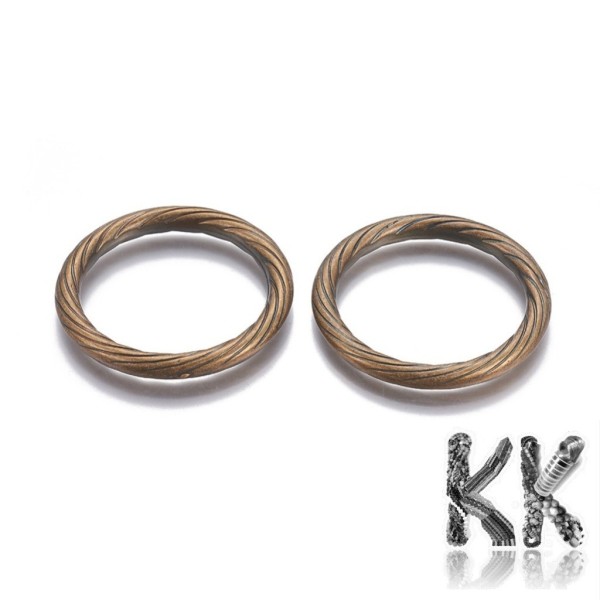CCB Plastic Linking Ring for Dream Catchers - Ø 49-50 x 5-5.5 mm
Plastic rings with CCB coating (Copper Coated Beads), which is one of the highest quality, best and most durable coatings on plastics. The rings have a diameter of 49 - 50 mm, a thickness of 5 - 5.5 mm and an inner diameter of 40 mm. It can be used, for example, for the production of dream catchers.
THE PRICE IS FOR 1 PCS
Plastic rings with CCB coating (Copper Coated Beads), which is one of the highest quality, best and most durable coatings on plastics. The rings have a diameter of 49 - 50 mm, a thickness of 5 - 5.5 mm and an inner diameter of 40 mm. It can be used, for example, for the production of dream catchers.
CCB plating (Copper Coated Beads) is formed by depositing copper on a rough plastic surface. Copper is one of the few metals that adheres well enough to the plastic surface so that it does not disintegrate after a short time, and at the same time the copper is also well covered with other layers of metallic paint, which otherwise does not stick directly to the plastic itself. CCB beads and components are thus unique in various technologies of metallized plastics and the durability of the plating surpasses many cheaper technologies of metallized metal beads and components. Plastic products are usually cheaper and lighter than the same metal products, so it is a great alternative.
Due to the color setting of the monitor, the color of the goods may differ slightly from reality.
Data sheet
- Weight
- cca 5,5 g
- Material
- Plastic
- Shape
- Circle
.
How to identify dyed minerals, artificial minerals and imitations? Simple hammer test can do the trick..
-
How to choose correctly?
-
What is the difference between waxing, dyeing, heating?
-
Why do beads fade?
-
Is there anything I can do against it?
-
Hammer tests for Jade, Agate, Malachite, Opalite, Azurite, Turquoise, Tyrkenite, Larimar, Hematite and Coral
-
When buying beads, why are there different color qualities from the same mineral on the same string?
.
A series of videos to help you navigate your bead selection. Watch the hammer tests where we show the differences in real minerals, synthetic substitutes and plastic imitation minerals. Fortunately, we have everything clearly marked on the Katlas Beads store, we never lie. This is a certainty which is hard to find on other e-shops.
From time to time, we come across someone complaining that they ordered a mineral in a certain colour and that some minerals have a slightly different shade or spots., how do we navigate the selection process? You need to understand that raw minerals are never identical. And it's proof that it's not an imitation or synthetic. On the Katlas beads eshop, you will come across multiple grades of qualities that address these queries.
After watching the videos, you will have accurate information and be able to navigate all the e-stores selling mineral beads.
Don't forget to subscribe to our YouTube channel. You won't miss any important videos and expert advice that will make you an expert in beading.
.














